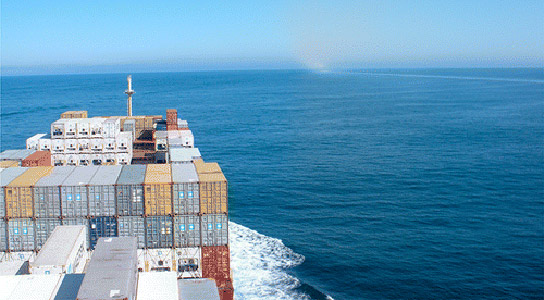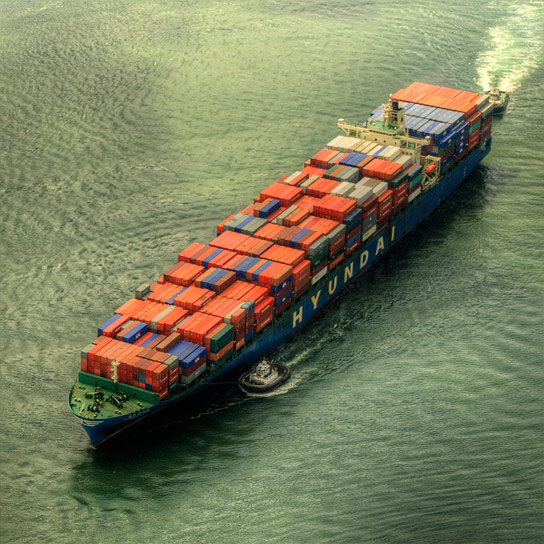Slowing Cargo Ships Results in Major Reductions in Pollution
November 23, 2012

Cargo ship on the ocean. Photo via Environ. Sci. Technol., 2012, 46 (22), pp 12600–12607
A new study indicates that slowing down vessels near coastlines by 10 to 15 miles per hour can dramatically reduce air pollution from the ships. However, only a few US ports have initiated efforts to apply this.
The scientists published their findings in the journal Environmental Science and Technology. A speed limit of 14 mph, down from the current speeds of 25 to 29 mph would cut nitrogen oxides by 55% and soot by 70%. It would also reduce carbon dioxide by 60%.

Cargo ship in Vancouver’s harbor. Photo by Flickr/ecstaticist
There are 100,000 ships carrying 90% of the world’s cargo, and the resulting air pollution is problematic for people living near ports. The ports of Los Angeles/Long Beach and New York/New Jersey are already part of a voluntary monitoring program and this has already cut down emissions significantly in those areas. They’ve been in place for a number of years. Setting a speed limit is an elusive goal for port cities because shipping traffic is regulated by international treaties.
All vessels, when they are within 10 nautical miles of a US port, must slow down to 14 mph. Ports that are part of the volunteer programs slow ships out further out, up to 40 miles offshore.
A ship’s fuel consumption and emissions increase drastically when they go faster. In order to increase air quality, speed reductions would need to be maintained long-term. The shipping industry is responsible for 3% of the world’s carbon dioxide emissions and shipping emissions are expected to grow 2 to 3 percent every year over the next three decades [PDF] as shipping traffic grows, according to the International Maritime Organization.
Some states, like California, have banned ships from burning dirty kinds of fuel and are rolling out other clean port initiatives. As a result, smog-causing nitrogen oxides from the Los Angeles port have declined 30% between 2005 and 2011, while particulate matter has decreased about 70%.
No comments:
Post a Comment